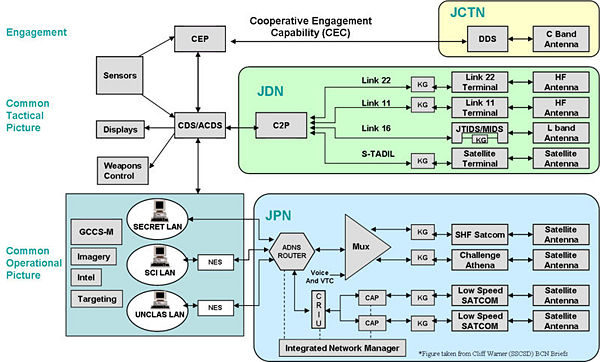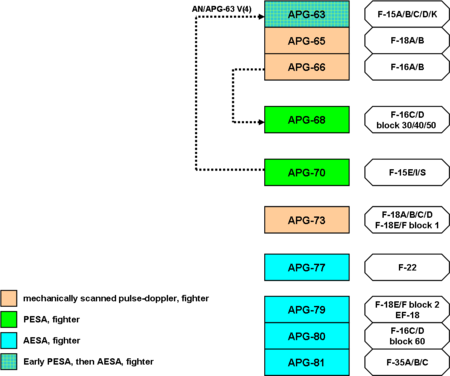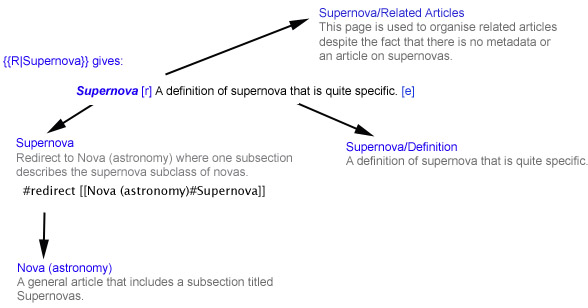CZ Talk:Usability: Difference between revisions
imported>Howard C. Berkowitz No edit summary |
imported>Chris Day No edit summary |
||
| Line 108: | Line 108: | ||
:Incidentally, can we get enough people such that subgroups aren't a solitary vice? I pick the wrong disciplines. What, does biology breed editors? :-) [[User:Howard C. Berkowitz|Howard C. Berkowitz]] 00:35, 3 November 2008 (UTC) | :Incidentally, can we get enough people such that subgroups aren't a solitary vice? I pick the wrong disciplines. What, does biology breed editors? :-) [[User:Howard C. Berkowitz|Howard C. Berkowitz]] 00:35, 3 November 2008 (UTC) | ||
::Biology is replication. And sex. [[User:Chris Day|Chris Day]] 03:47, 3 November 2008 (UTC) | |||
==Article-specific subpages== | ==Article-specific subpages== | ||
This is an area that needs some usage guidance. There were some cases where Larry told me not to use them; I honestly don't remember the specifics, but I had the impression, at the time, that he did not want a proliferation of nonstandard subpage types. | This is an area that needs some usage guidance. There were some cases where Larry told me not to use them; I honestly don't remember the specifics, but I had the impression, at the time, that he did not want a proliferation of nonstandard subpage types. | ||
Revision as of 22:47, 2 November 2008
Template:TOC-right "Usability" may not be the ideal term here, as a very significant part of the issues here involve locating material on CZ, and, especially, navigating among potentially related topic. Well-considered navigation methods and practices may be a very distinct advantage of CZ over WP. Usability applies to authors as well as readers; we want to make it as convenient as possible to tie new contributions into the navigation system, and also to add appropriate supplemental information. Supplemental information includes definitions (not restricted to Article/Definition pages), reference information applicable to multiple articles, etc.
Very briefly, the Article/Related Pages subpage is an extremely important part of the conceptual design. I'll simply say that the intended use of Related Pages and its evolved capabilities substitutes for WP Categories. CZ Workgroups may seem superficially like WP Categories, but they are more focused on collaboration than indexing.
Before I go further, note that it is possible to define Article/Definition and Article/Related Pages without defining the main Article.
While there is not an intention to create a hard and fast workplan dictated from the top down, my personal opinion is that there is an increasingly strong consensus, among people who have thought about it a lot (and know things they don't know) that CZ is far more concerned than WP about having "unifying places". Those might be as simple as a Related Articles page with no main article existing, but I think it's fair to say that we do not see search engines as the only significant entry point to CZ. Howard C. Berkowitz 13:38, 1 November 2008 (UTC)
- Howard, this is a good start. I think there are two other usability issues that you have not touched upon. 1) Subgroups, the smaller communities that can exist across or within workgroups. 2) The ability to define tabs for subpages that are not globally defined but might be very important for one specific topic.
- Another issue for us to realise up front, at least from my perspective as the one that wrote most of the templates, everything is negotiable. The organisation we have now has evolved over time. Many of the issues we discuss now were not even conceived when the subpages were first written. It is possible we need to redesign and that is OK. Chris Day 20:21, 1 November 2008 (UTC)
Using Related Articles pages
Related Articles play a critical role in the rise of the citizendium. As i see it they have a role for indexing/browsing. They also have a more organisational role for planning articles. This latter role is the reason I allowed these to exist without the metadata or the article.
When planning, it isn't strictly necessary to have more than an article title to put into the R-template. No other content is necessary.
The more one knows about the Template: R, the more that one can do on a Related Articles page, but one can use these pages as planning and organizing tools even with minimal R-template usage.
Related Articles pages are now largely dependent on the "R-template", which also appear on disambiguation pages. This template can be a place-holder, show an article name, a definition-only, or an article name and definition. One of the problems is that certain short topics need the function served by a definition, but it is not possible to wikilink usefully to a Definition out of a main Article. This is a hot area of discussion.
Interim test area
PowerPoint and I are facing one another in the dusty street, ready to reach...
Here's an ideal: The Other Place has lots of individual articles on aircraft and components, but there's no coherent way to get high-level relationships, evolution, etc. Through various structures, be they Related Pages, or something I'll call a "catalog" although it actually might be an RP, I would like to see us become a place where one can see patterns not visible there.
A "catalog", for example, might start as a list of the guess -- dozen or more just fighter combat radars now flying in U.S. aircraft. Which is on what plane? What is an descendant of another? Not just the U.S., but other countries have an annoying habit, due to internal politics and appropriations, of calling something an "enhancement" when it's essentially a redesign.
There are times, for reasons of external and external politics and perceptions, that a country goes through really strange naming conventions. Switching to naval warfare, there is a section in cruiser that I can only call the U.S. Navy's period of temporary insanity that ended about 1975. In this case, there was a "cruiser gap" that never actually existed or even had meaning.
Explaining these trends is, I believe, perfectly valid synthesis and indexing, but it just isn't done Over There. There is a limit to what I have time to do, but perhaps I can create the skeleton of a navigable structure on which others can build.
As I say, I'm working on pictures. It tells me something, for example, when the chart of radar designations, the aircraft using them, naming changes in aircraft and electronics, etc., begins to resemble a knitting diagram using spaghetti. Howard C. Berkowitz 20:34, 2 November 2008 (UTC)
Did you ever consider something more graphical with the appropriate image map links? To the right you see a half finished example using the CEC template (see Template:CEC). The grey boxes at the top left are active, as are all the KG antenna boxes. Every element of the picture could link to an appropriate articles or definition. Chris Day 20:44, 2 November 2008 (UTC)
A possible application or catalog generator
Go to AN-. Click on "what links here". If you don't see the pattern emerging, click on any of the XYZ-99 links to AN, and look at the way I do the bolded designation in the first sentence.
There are a lot of possibilities here, although, at some point, they really would need a data base. It would get too complex for manual maintenance (e.g., what are all the radio receiver types in U.S. military use?) Howard C. Berkowitz 22:13, 2 November 2008 (UTC)
Defined definition for redirect
AESA. Howard C. Berkowitz 22:54, 2 November 2008 (UTC)
Now you are getting the hang of it. So {{R|AESA}} gives:
The one difference that alerts you to the fact it is a redirect is the bold italicised text as opposed to the plain text link of {{R|Radar}} that gives:
- Radar [r]: Acronym for "radio detection and ranging"; a system used to locate a distant object by transmission of radio waves and reception of their reflection. [e]
And points to the same page.Chris Day 23:21, 2 November 2008 (UTC)
- Take this as either a usability argument against the italicizing, or an argument for some sort of parameter to the R-template, in definitions, etc., that says "don't call attention to this because it is doing exactly what I intended it to do."
- You will also note that I broke the rule and had two sentences in a definition. Mea culpa, mea culpa, mea maxima culpa. Wink wink nudge nudge, know what I mean? Monty Python redirects...what a concept!Howard C. Berkowitz 23:29, 2 November 2008 (UTC)
- I didn't know there was such a rule? Better two than run on sentences. I knew you would come back with the its doing what its supposed to do argument :) Originally it was just for redirects, the idea was to nudge authors to write the article but I guess if there is no intention of writing these articles then we should have plain text. I'll think more on this. Chris Day 23:47, 2 November 2008 (UTC)
- How difficult would it to be have some parameter in the definition that communicates "I'm a definition only" to the R-template, so only in that case do you not nag? Howard C. Berkowitz 00:35, 3 November 2008 (UTC)
Some diagrammatic thought
Think of this more in the kind of relationships it shows. Now, the emphasis is on the radars, although one can read evolution of radar into aircraft versions within the model, version and block numbers.
This is, however, a concept not at the other place.
- See all the radars in one place! (although not significant upgrades within a radar designation, other than the APG-63 ate the APG-70 in Version 4.
- See the associations of radars with aircraft!
- Not explicitly, but show how radars incrementally upgraded within aircraft series. This doesn't show when something was released in a new build aircraft, or was a retrofit.
I needed to look at this. Maybe it will trigger ideas about the navigational edge (never mind that some of these radars do navigation) that we could have over The Other Place. Howard C. Berkowitz 00:35, 3 November 2008 (UTC)
R template trickery
Speaking of redirects, did you notice my recent suggestion on Talk:ULTRA? i think that is what you are trying to achieve. The working example is {{r|Supernova}}; it points to a subsection of Nova (astronomy) but uses the Supernova/Definition. The key is the redirect set up at Supernova. Chris Day 23:48, 1 November 2008 (UTC)
- I took a look, and decided I wanted dinner before working out the assorted levels of indirection and redirection; I am probably going to diagram it and meditate over the resulting mandala.
- Now you've got me trying to remember who said "No problem in computer science is intractable to a sufficient use of recursion." Dave Parnas? The next philosophical question is if that quote is semantically equivalent to an instructor, at the Special Warfare Center, who told me that no problem was insoluble, given a skilled application of a sufficient quantity of high explosives. Howard C. Berkowitz 23:59, 1 November 2008 (UTC)
FYI, this is how I see it: Chris Day 00:29, 2 November 2008 (UTC)
- (light dawning) The existence of the supernova definition is independent of whether or not supernova were a subhead (superhead?) of nova. Howard C. Berkowitz 00:48, 2 November 2008 (UTC) (continued below)
- What software did you use to create that diagram? (Wonder if it's freeware that runs on a platform available to me. Everything I now use is too cumbersome to get quickly into a page). Howard C. Berkowitz 13:03, 2 November 2008 (UTC)
- I used photoshop; a bit like using a sledgehammer to squeeze an orange. I'm not sure what freeware is available. Chris Day 15:29, 2 November 2008 (UTC)
- That definitely helps Related Pages. The only thing to which I could wikilink, though, if it existed, would be nova#supernova. Howard C. Berkowitz 00:48, 2 November 2008 (UTC) (continued below)
- I don't understand. Why can't you link to supernova? The redirect gets you to the right place now, and it still will later even if we eventually have a separate article for Supernova. I use such links routinely, consider them standard procedure.
- Triple DES, CAST-128 and Feistel cipher for example, currently point into block cipher. That eliminates red links in other articles, and if someone wants to write a real article on one of those topics later, they can trash the redirect and/or mine the existing text for anything they can use. Sandy Harris 14:53, 2 November 2008 (UTC)
- Sandy, this is specifically relating to the use of the {{R}} template on the Related Articles Subpages. I agree that such redirects are common in the context of the articles. The significance here is that the R template can still produce a term specific definition even though there is no actual article (in this case Supernova). This is because the supernova subpage Supernova/Definition can exist and be ultilised by the R template despite there being no supernova article or metadata. Currently we are calling these Definition Only subpages. They are used exclusively on the Related Articles subpages and on disambiguation pages. Chris Day 15:29, 2 November 2008 (UTC)
- Let me try an example, which may not be the greatest. The APG-63 radar is one of those "spiral evolution" developments, where it's constantly been upgraded in F-15 Eagle aircraft, which are pure air superiority fighters; the current version is AN/APG-63 V(3). F-15E Strike Eagle aircraft is an extremely successful variant that offended the "Fighter Mafia", who used to chant "not a pound for air to ground". Anyway, the APG-70 radar was a new design for the Strike Eagle, which adds air-to-ground to air-to-air modes. Some sanity swept in, and, when there started to be a need to upgrade the radar antenna/transmitter/receiver on the Strike Eagle, it was pointed out that the V3 was far superior to the "front-end" on the APG-70. So, the V(4) is going to add the air-to-ground radar computation function from the -70 and put it behind a V(3) front end. In principle, one radar for all the aircraft.
- I haven't written up the air-to-ground modes, but let's say I decide to keep it in the APG-63 article. I need to be able to link from the F-15E article to a lower-case -d definition of the APG-70 as "the first generation radar for the F-15E". In an encyclopedia, that is all, I believe, that's necessary. But, if I need to put APG-70 in related articles to show history, I need to have both a Definition so the R-template doesn't nag, and a definition in article form so the APG-63 article text can reference it. D/definition really can be the same two sentences. Howard C. Berkowitz 00:48, 2 November 2008 (UTC)
- I could be lost but it sounds like all you need is APG-70/Definition and APG-70 that should exist as a redirect to the F-15E article where it is mentioned i.e. #redirect [[F-15E_Strike_Eagle#Radar]]. Chris Day 01:01, 2 November 2008 (UTC)
- Actually, seeing your current content at those pages, i'm sure I'm lost. I'll let you have a try at setting one up and then we'll go from there. Chris Day 01:03, 2 November 2008 (UTC)
- I could be lost but it sounds like all you need is APG-70/Definition and APG-70 that should exist as a redirect to the F-15E article where it is mentioned i.e. #redirect [[F-15E_Strike_Eagle#Radar]]. Chris Day 01:01, 2 November 2008 (UTC)
- I'm thinking about what I really want to accomplish with the radars, aircraft, radar technologies, and aircraft roles & missions, and sometimes I approach that better with a diagram. There are multiple objective, although my stream of consciousness was undoubtedly obscure. It did help me shake out some ideas. 13:03, 2 November 2008 (UTC)
- I'll see how it materialises. Chris Day 15:17, 2 November 2008 (UTC)
Subgroups
Again, some discussion on how to use them will be important. There's also the social requirements of having critical mass for subgroups.
- Incidentally, can we get enough people such that subgroups aren't a solitary vice? I pick the wrong disciplines. What, does biology breed editors? :-) Howard C. Berkowitz 00:35, 3 November 2008 (UTC)
- Biology is replication. And sex. Chris Day 03:47, 3 November 2008 (UTC)
Article-specific subpages
This is an area that needs some usage guidance. There were some cases where Larry told me not to use them; I honestly don't remember the specifics, but I had the impression, at the time, that he did not want a proliferation of nonstandard subpage types.
In other cases, I started out with something in a subpage, and found increasing needs to link directly to it. For example, I had discussed fission and fusion as types of nuclear weapons, but found we really didn't have the weapons effect defined elsewhere. Linking to them didn't seem to work, although I may have had the wrong syntax. I could also see some software being confused on finding article-specific subpages from an external point. Howard C. Berkowitz 20:40, 1 November 2008 (UTC)
- It is true that Larry is not enthusiastic of it getting out of control. But I think limited use might be fine. To read more see the following page and related discussion. CZ:Proposals/Should_we_allow_article_specific_subpages?, CZ:Article-specific_subpages Chris Day 21:26, 1 November 2008 (UTC)


